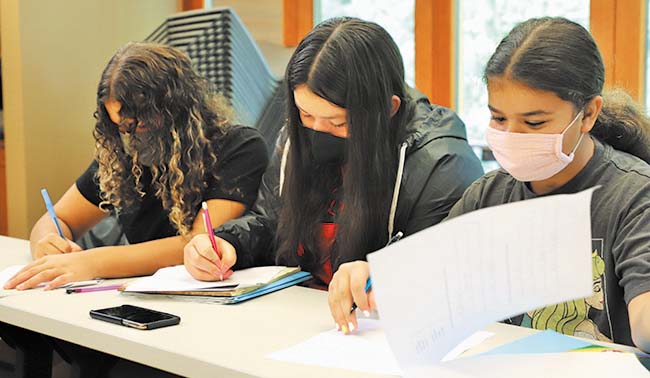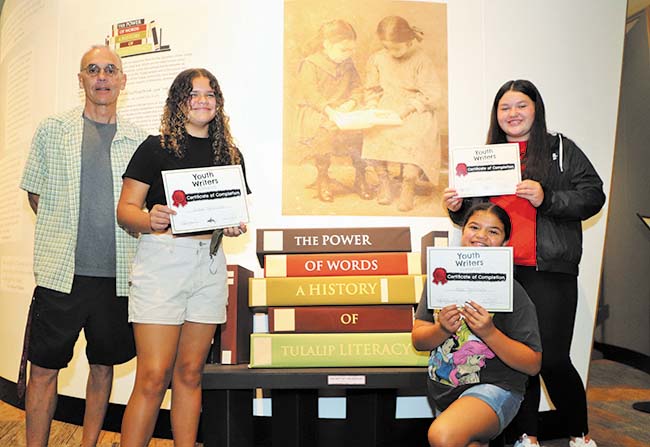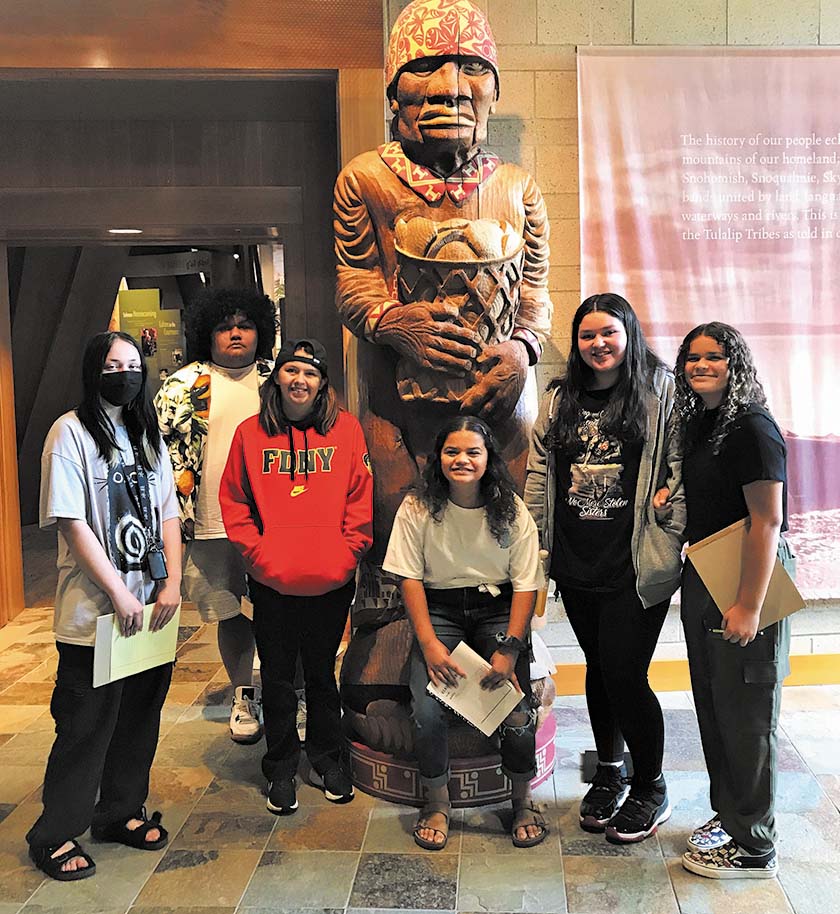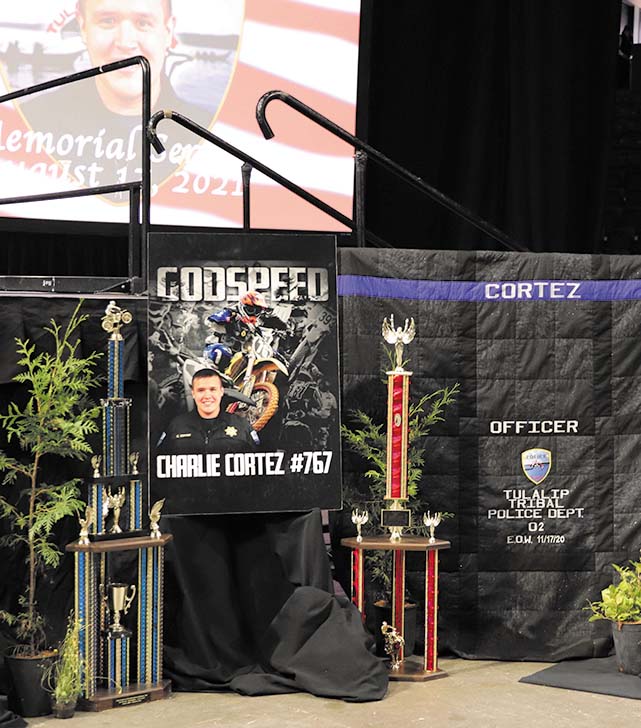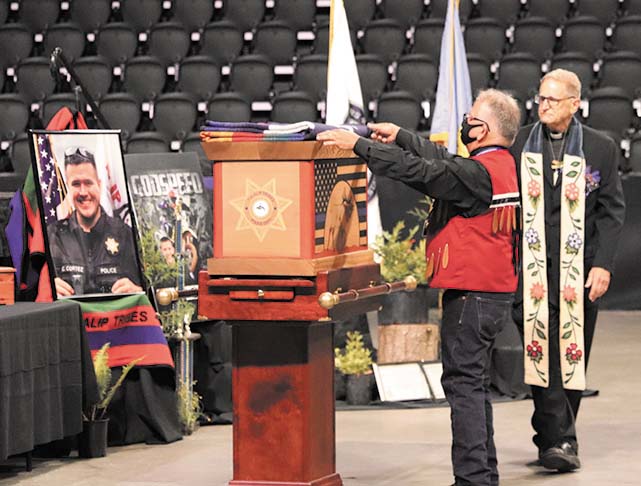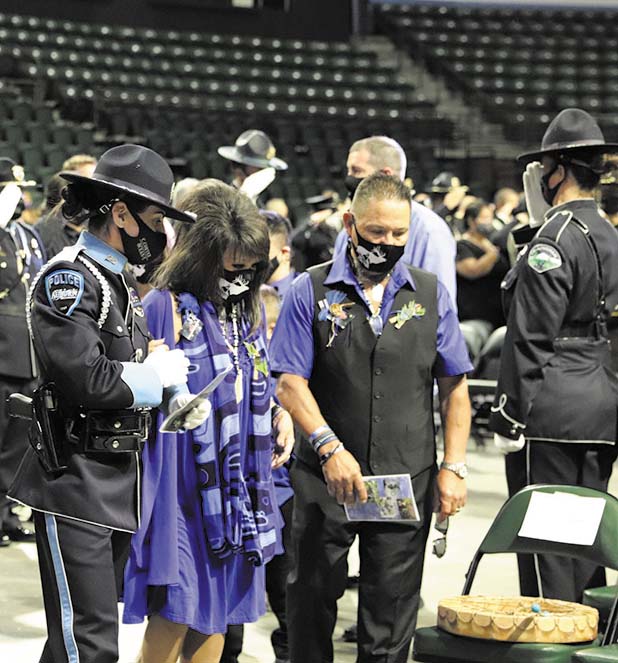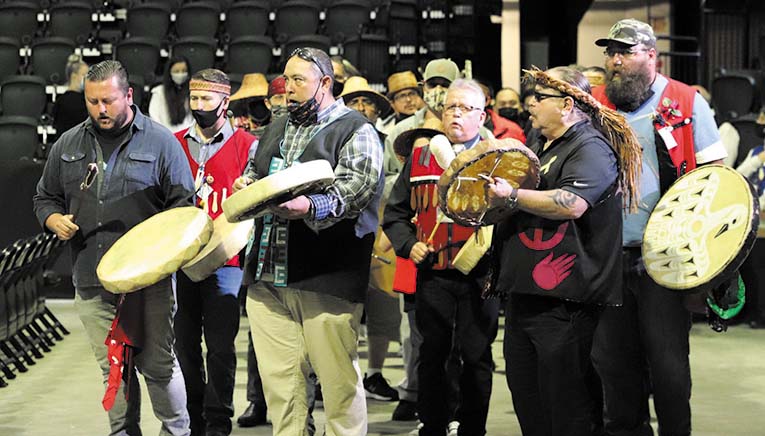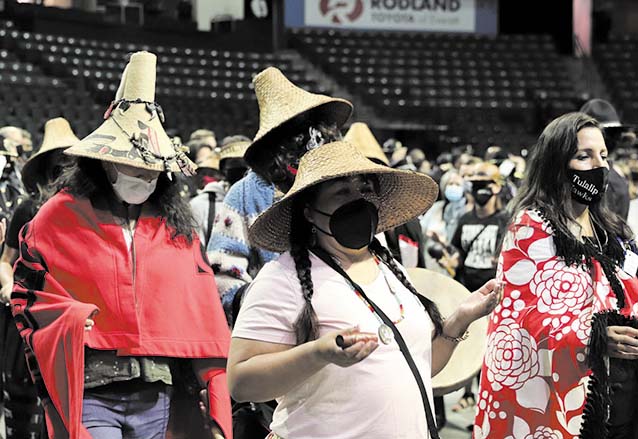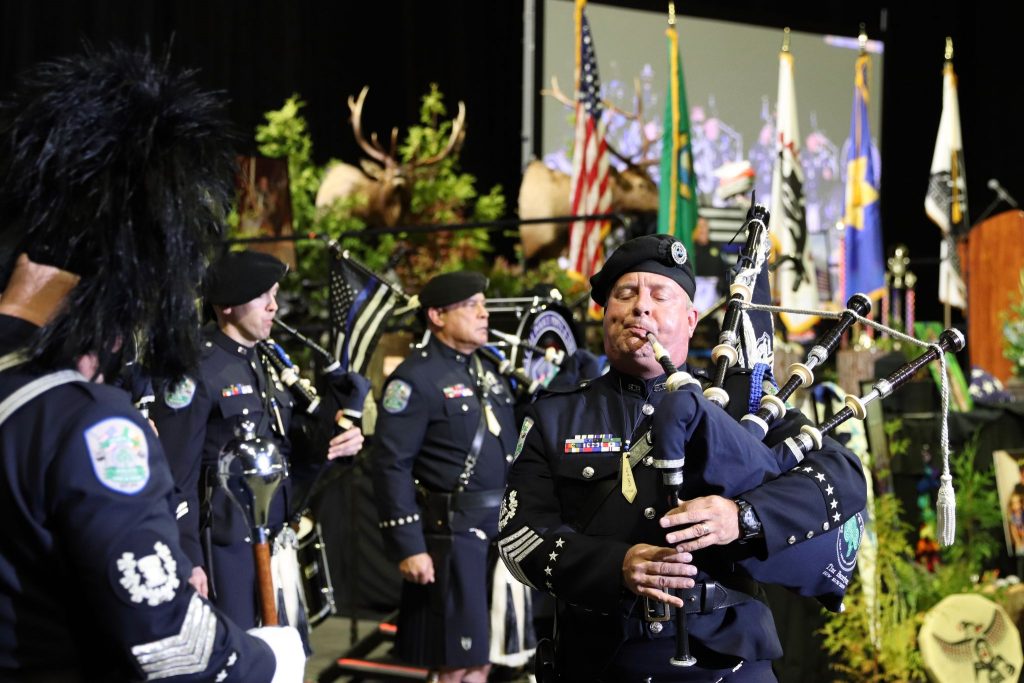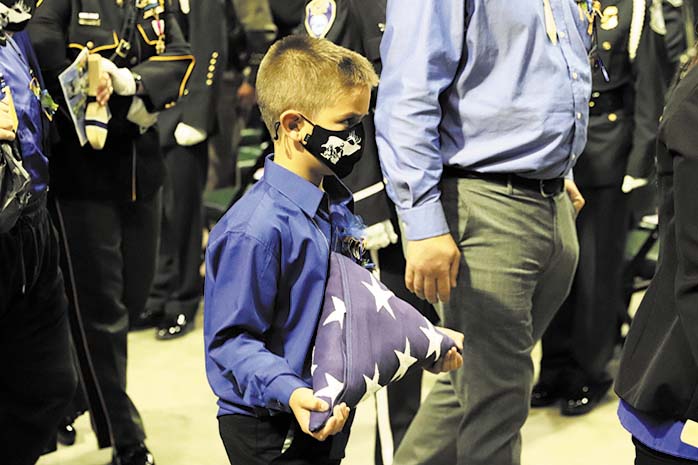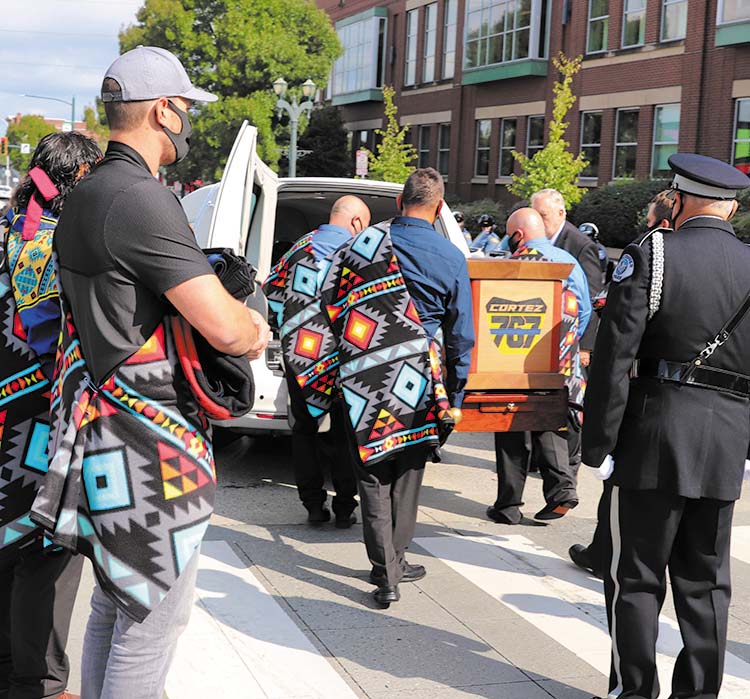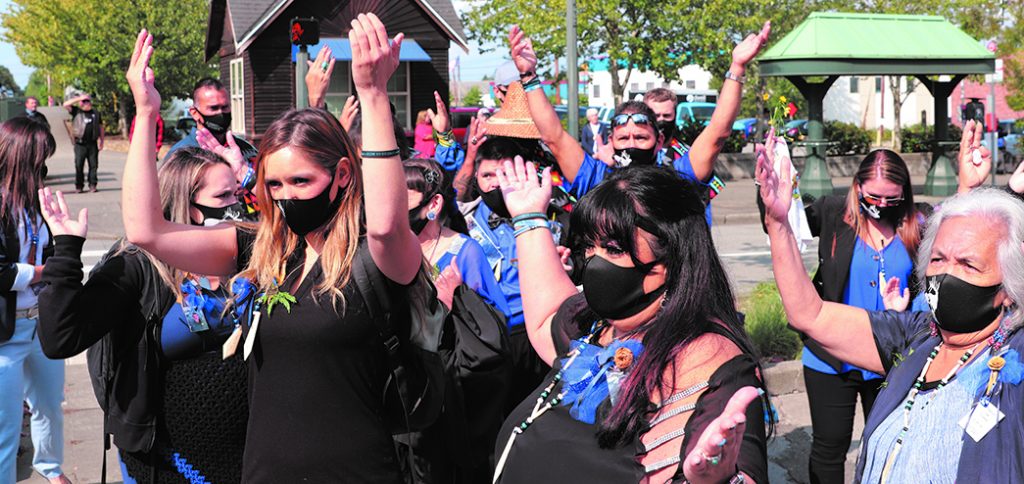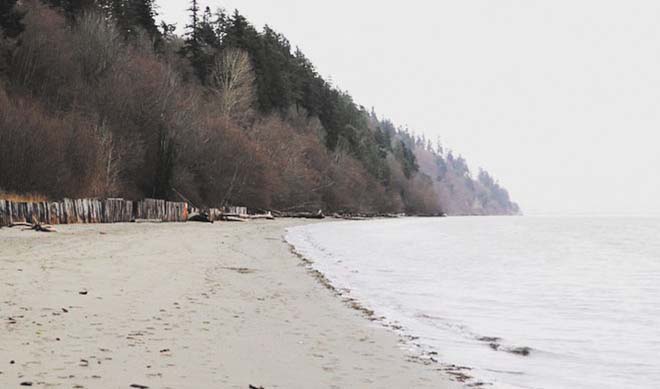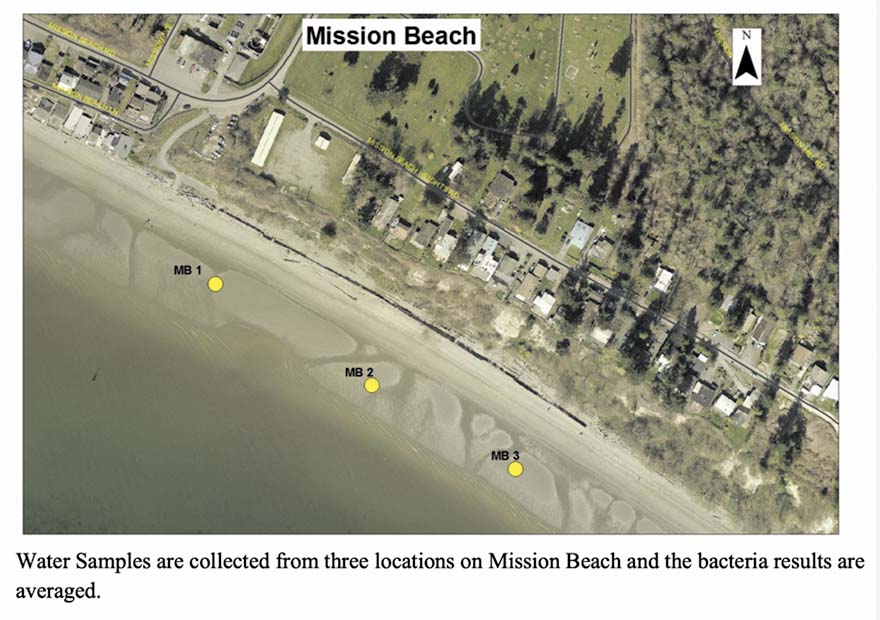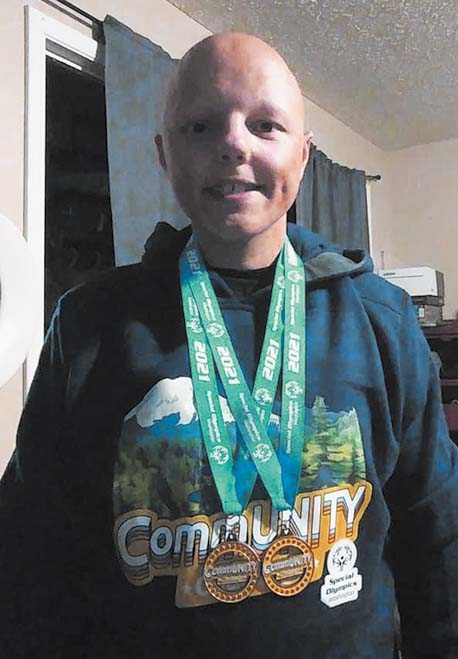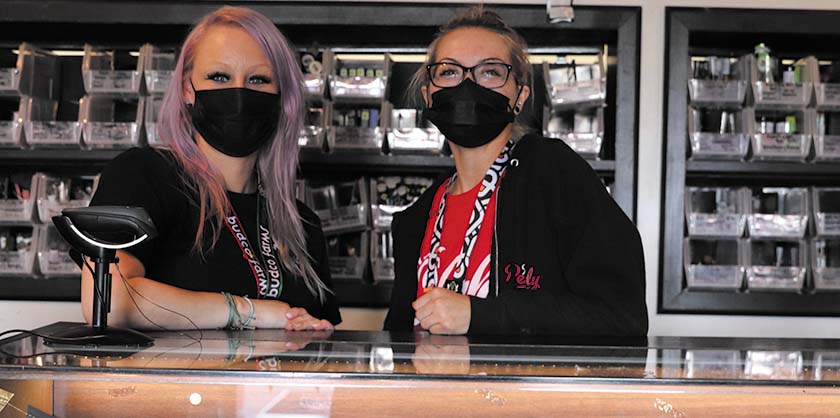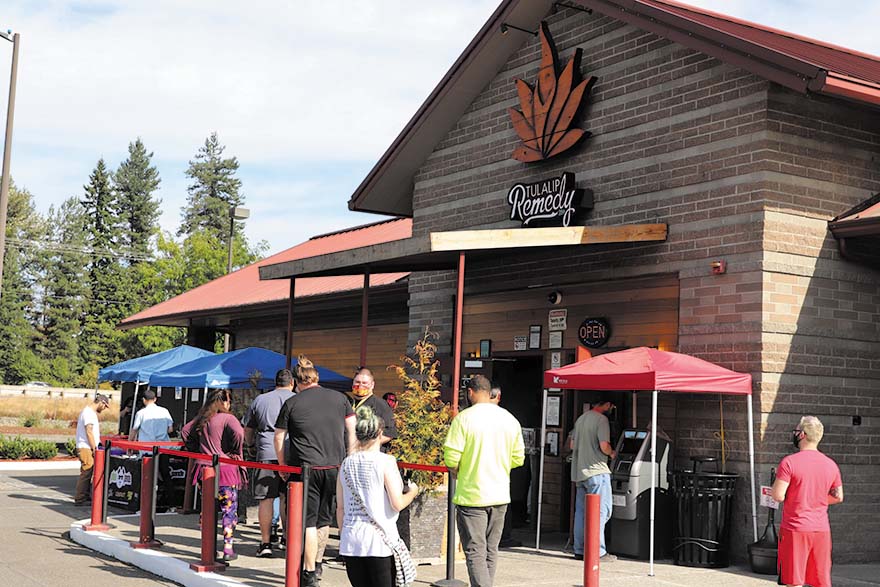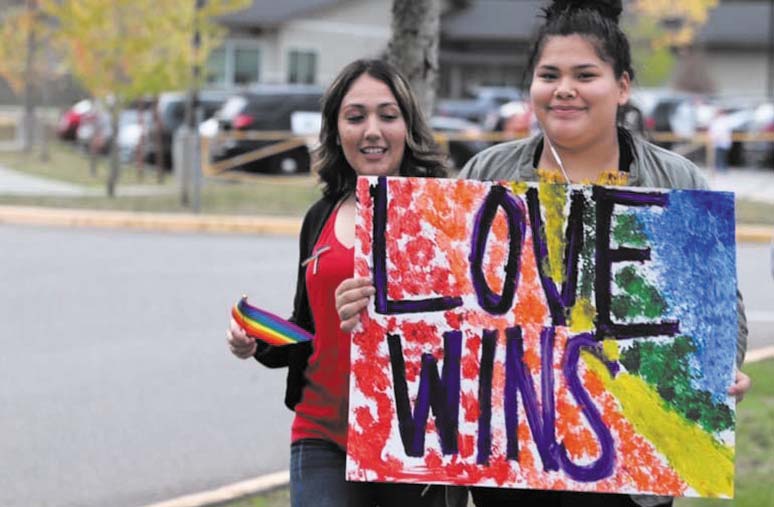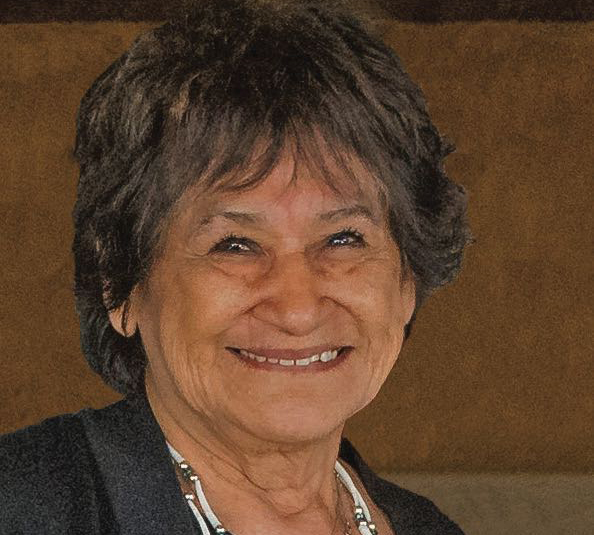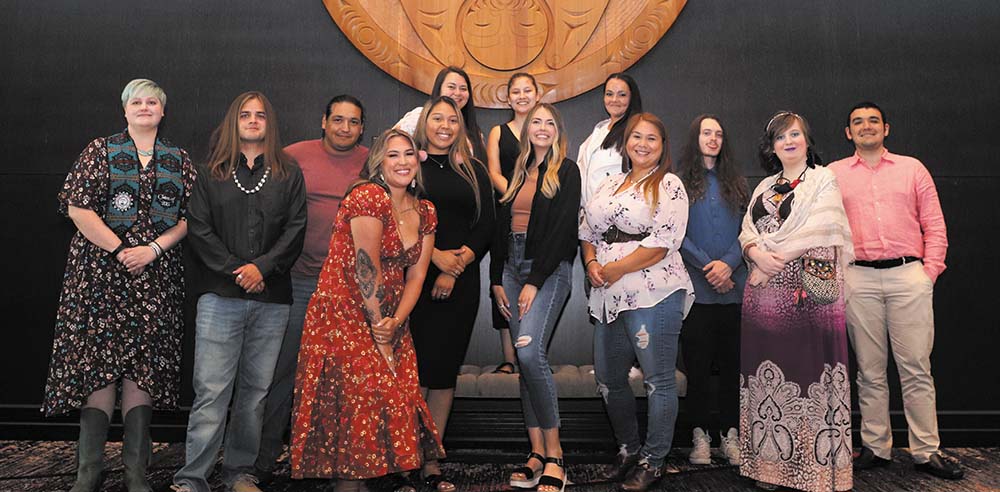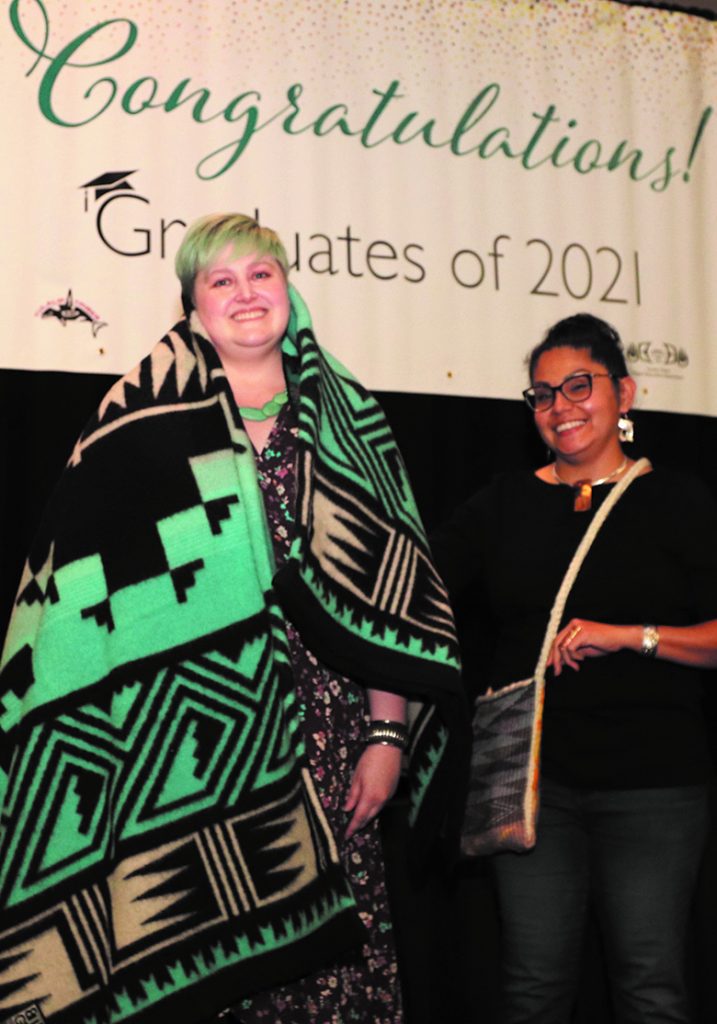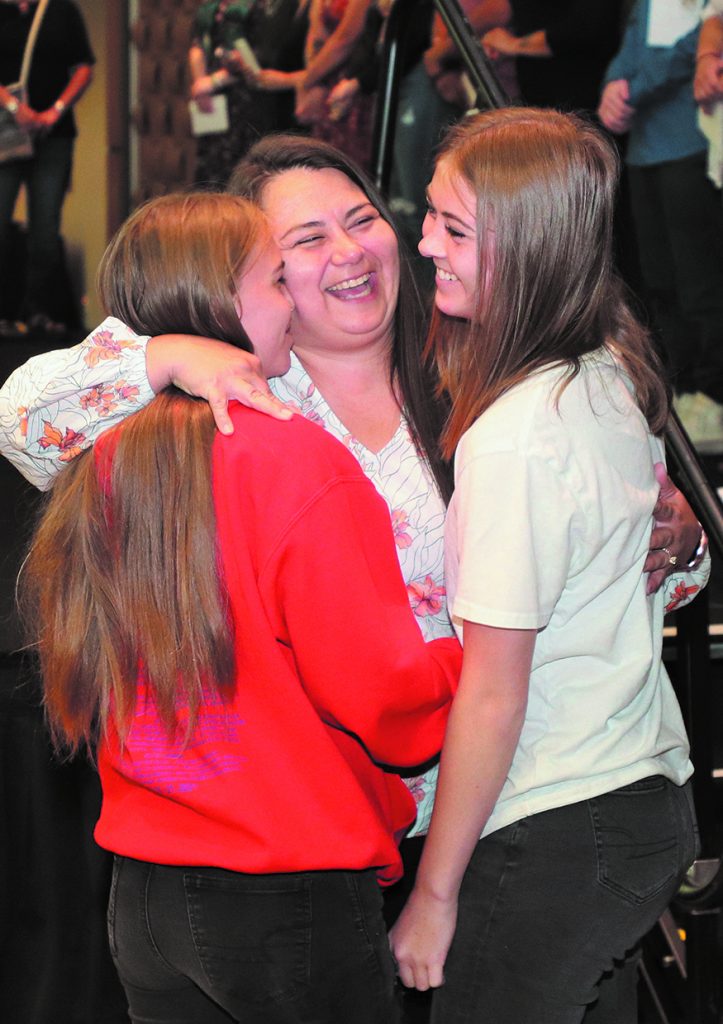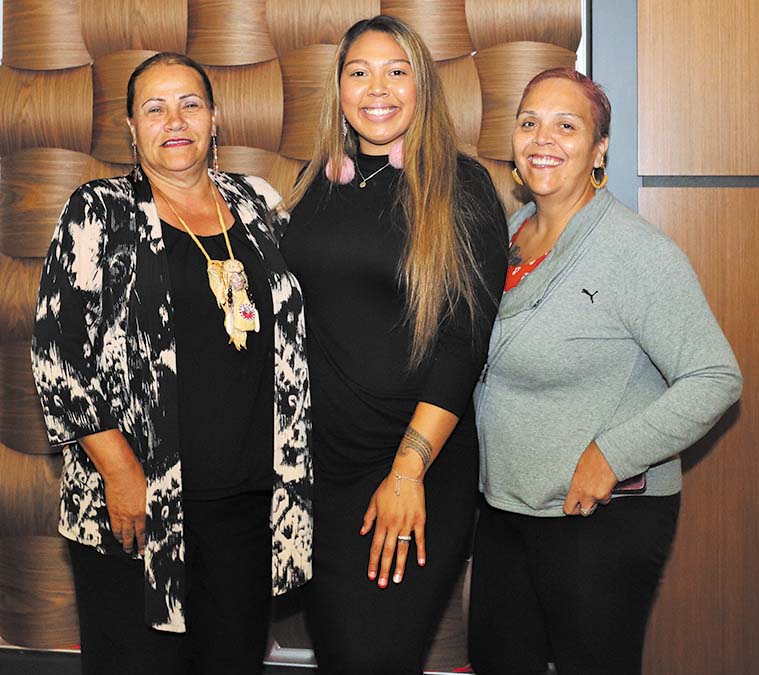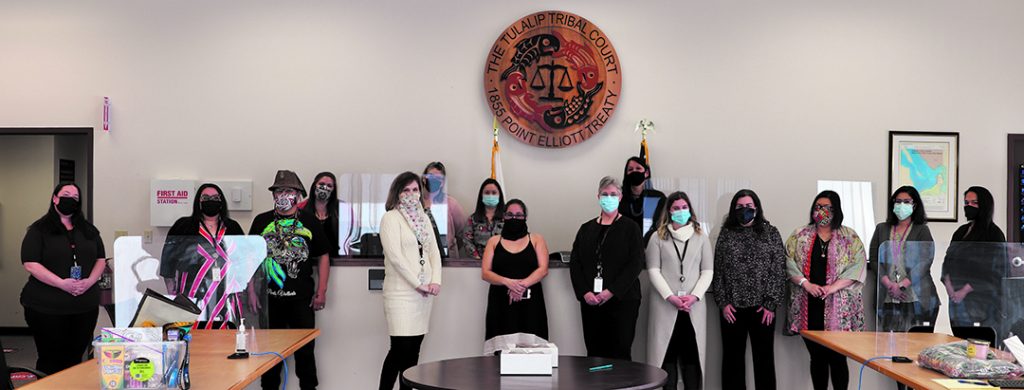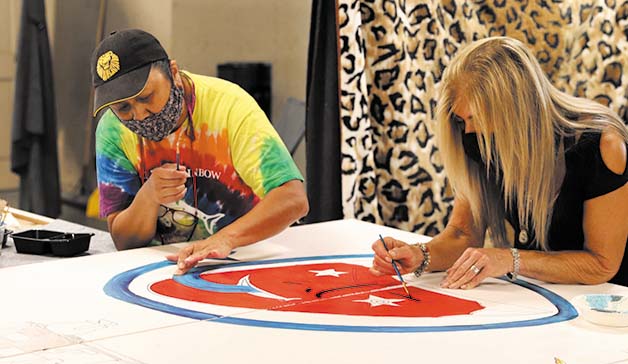
By Kalvin Valdillez, Tulalip News
Radiant energy beamed from a group of artists on a late summer Saturday afternoon. Collectively working on a large masterpiece, they shared bubbly conversation as their brushstrokes left behind vibrant colors on a canvas that consisted of four panels. The artists zoned-in on the task at hand while Indigenous music blasted out of a boombox. Inside of a storage shed on a large property in Stanwood, their workspace serves as a pleasant escape from the busy world, a creative environment they get to enjoy on a near-weekly basis.
“I experience pure relaxation. It’s very therapeutic,” said artist Jeanie Skerbeck. “It opens my mind to things I need my mind opened to. When I’m in a bad mood, I like coming here to paint. And I’ll tell you what, when I leave, I’m always in a good mood.”
Over the past few months, several Tulalip Healing Lodge residents have contributed their time, creativity and artistry to a collaborative project that many locals will get a chance to see in-person upon completion. Though plans on where have yet to be finalized, the traveling mural project will more than likely be on display at a location near you in the upcoming months.
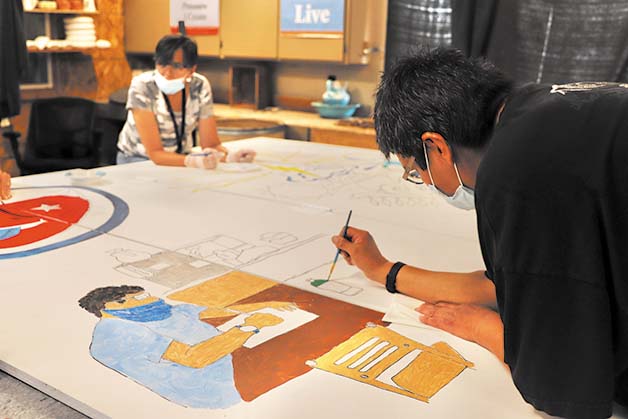
Although it is still a work-in-progress, the mural is a meaningful project that already holds a special place in the hearts of each artist who picked up paint brush and left their imprint on the canvas so far. Utilizing their creativity to express their story in detail, the painters found an outlet and a new form of expression that they can use as a tool during their recovery journey.
“It’s going to be big, I love being a part of this,” exclaimed Tulalip artist, Ambrose Alexander James Jr. “I thought that I was just coming out here with my fellow comrades to keep them upbeat, but I decided to participate and it’s changing who I am. I never did this before, but my grandpa told me art brings out your true spirit and who are. I’d like to learn all that I can because he tried to teach me before, but I never experienced what he was talking about until now, that I got two years sober.”
Numerous studies have proved that art therapy has assisted greatly in addiction recovery, boosting self-esteem and reducing anxiety and stress levels, while also allowing the artist the space to go inward and address and resolve any personal conflicts they may be facing. This past spring, the Tulalip Problem Gambling program hosted an art class at the Healing Lodge where they asked the participants to ‘paint from the soul rather than from their brain’.
“We really wanted to have something new they can learn, and use their gifts and talents they didn’t even realized they had, and put their energy into that,” said Problem Gambling Counselor, Robin Johnson. “We were really amazed at how good their attention, questions and interest were during the first session. We went for two hours and we didn’t even get to the painting.”
Problem Gambling enlisted Tulalip tribal creative, Monie Ordonia to instruct the class and the Healing Lodge residents loved her energy. Because of the great interaction between student and teacher, and all the positive results and feedback of the first class, the Problem Gambling program presented the idea of the mural to the Healing Lodge residents and asked Monie to return and lend her good vibes and expertise to the participants.
Said Monie, “We had the residents do sketches and the question posed to them was, ‘what if instead of surviving addiction, we go past that and thrive?’ We already survived, so what’s the next step? It’s to thrive and become an empowered citizen. To thrive and use that as their legacy. This mural is part of their legacy, to help others recognize that they can also thrive through the Healing Lodge. That’s how these images came out, they were all sketched by the residents who were here at the time.”
Robin and Monie both explained that the residents at the Healing Lodge often change and many of those artists who started the project are no longer staying at the lodge. However, the new residents were happy to pick-up where the others left off and continue the project.
On one side of the mural are four drawings, including a shark-whale and a ‘star-eyed’ mask, created by previous residents at the Healing Lodge, that Monie expanded in size and transferred to the panel-canvas. The other side of the mural depicts a Tulalip Canoe Family on the waters of the Salish Sea, with their paddles facing up and an eagle soaring in the distance.
“I feel welcomed. I feel good. I actually feel comfortable coming here and doing something like this. I really enjoy it,” expressed Tulalip artist Justine Moses. “I think it’s important for recovery, it helps us connect to our inner-selves, spiritually. And it’s cool just to see the art come out. Even if we mess up, it still looks good.”
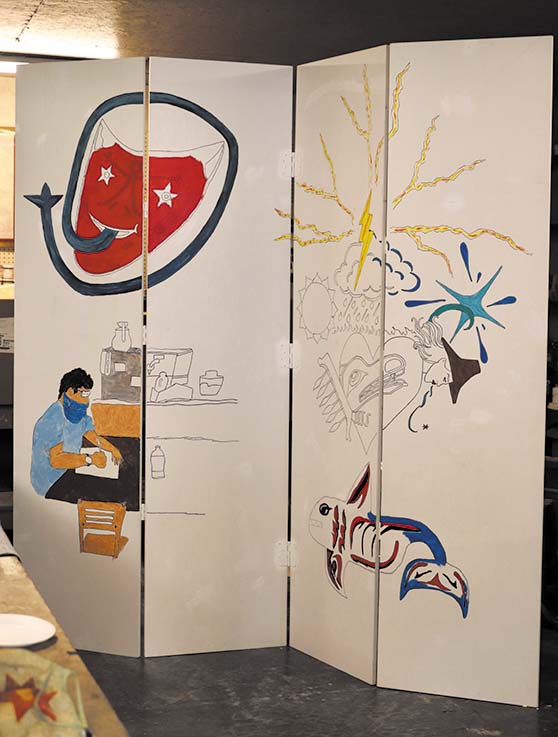
The Healing Lodge was first established in 2015 and has helped both Tulalip tribal members and those enrolled with other tribal nations attain and maintain a healthy and sober lifestyle. Healing Lodge Resident Aide, Desa Calafiore stated, “The Tulalip Healing Lodge is a clean and sober living home for tribal members. I believe it helps people greatly. I think it’s great for the community. We have some real success stories come out of here. We offer groups, meetings, stability, cultural events. It gives them a chance to be around clean and sober people in a safe environment.”
Desa went on to explain that people often find a new passion in normal, everyday activities while on the road to recovery and self-discovery such as art. And as she mentioned previously, the Healing Lodge has many success stories, but she also stated that there were some instances where residents experienced setbacks as well, but quickly noted that this is often a necessary part of recovery. This is also a lesson that Monie is sure to incorporate in all off her teachings.

Monie shared, “One of my biggest lessons is reminding them there are no mistakes. Mistakes are stepping stones to bring you to a new choice. When you realize it’s not about being perfect, it’s about opening up that outlet and letting your creative energy flow, that leads the way to remembering who you are and how powerful you are as a creator. So when you can activate that creative source within you, now you’re also awakening that freedom of choice, am I going to choose something that imprisons me like addiction, or am I going to choose something that empowers me, something creative that feeds the soul rather than the addiction?”
Tulalip News will keep you updated as the Healing Lodge artists complete the mural and take the art project out on the road. For further information about the Healing Lodge, please visit https://www.tulaliphealthsystem.com/BehavioralHealth/HealingLodge
